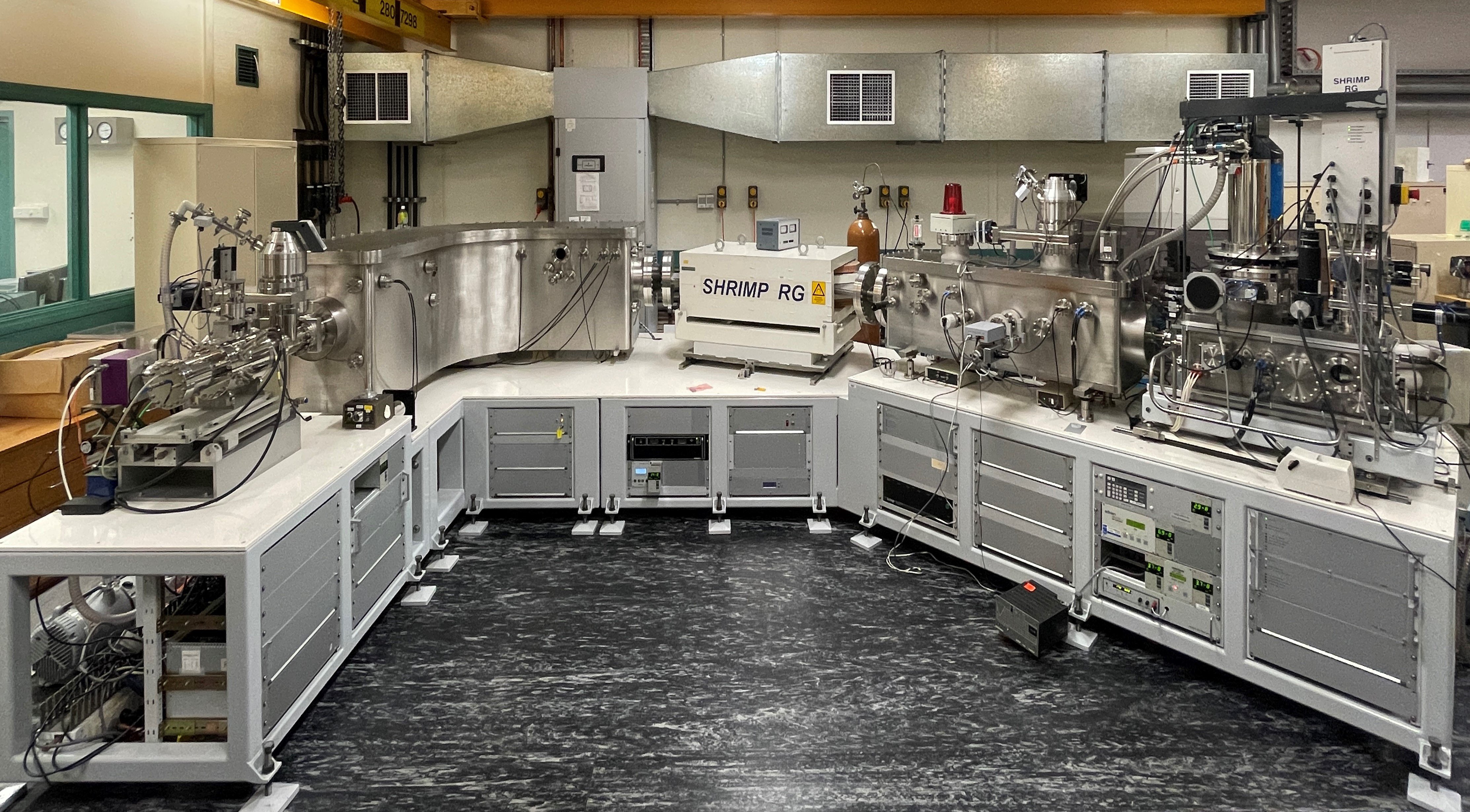SHRIMP instruments
Three ion microprobes (SIMS) are located at ANU. SHRIMP SI is dedicated to light stable isotopes. SHRIMP II is a versatile instrument that was a prototype for similar instruments worldwide. SHRIMP RG uses a reverse geometry design and is intended for ultrahigh mass resolution.
SHRIMP SI
SHRIMP SI (stable isotope) is designed for low mass range stable isotope works (e.g., C, O, N, S, and Cl). It is equipped with a Cs+ ion source (sputtering negative secondary ions), 5-channel multiple collector, electron gun, 3 position sample stage and 8 position racks for sample change. It is exceptional for analysing three O isotopes and four S isotopes at low concentrations.

SHRIMP II
SHRIMP II was designed with a single collector but it recently received an ARC LIEF grant to upgrade for 3-channel multiple collector. It is equipped with dual ion sources (Cs zeolite gun and duoplasmatron) thus is capable to work with both positive and negative secondary ions. Currently it is dedicated to light metal isotope works (e.g. Mg and Ca) and U-Pb analyses (positive secondary ions and an oxygen primary beam). 3 position piezo stage was installed recently with supporting from AuScope funding.

SHRIMP RG
SHRIMP RG (reverse geometry) uses a different ion optical design to the other SHRIMPs (modified after original designs from Matsuda, 1990). In the reverse geometry, the magnet precedes the electrostatic analyser in the ion optical pathway. SHRIMP RG is equipped with duoplasmatron (positive secondary ions) and a ‘Dual’ collector for very high dynamic range. It provides exceptional high mass resolution (four times mass resolution compared to SHRIMP II) for trace element analysis and U-Pb isotopes.

